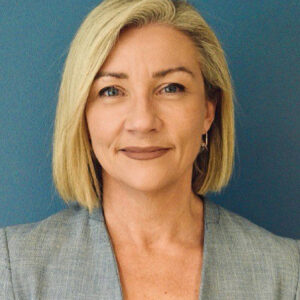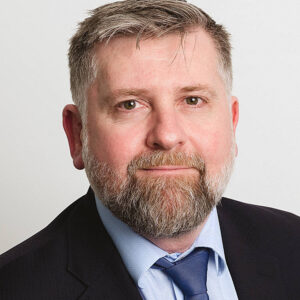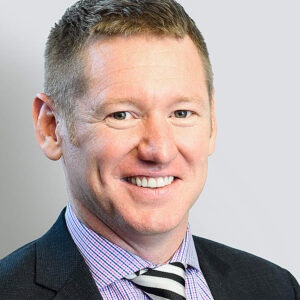Australia and New Zealand
Unique and evolving markets require custodians with both global capabilities and local expertise.
For tourists, Australia and New Zealand offer their natural wonders, cosmopolitan cities, and laid-back vibes; for financial institutions, custodians, and exchange operators, primary attractions are stable economies, fast-growing pension plans, and modernising market infrastructure.
As the Australia and New Zealand markets develop, high-level trends include consolidation, among asset managers as well as custody providers; internationalisation, in the form of expanded access to global markets; and asset servicers stepping up to meet institutions’ increasing need for digital solutions.
A key in the capital markets ecosystem is the custodian, or asset servicer, which provides custody, safekeeping, clearing, and administration of securities held by institutions. Custodians are especially important in relatively small yet evolving markets such as Australia and New Zealand, where inbound capital flows are rising, domestic asset owners are seeking global investments, and all parties want better technology and more efficiencies in trading and clearing.

“Offshore investments into the local markets and the domestic investment from the buy side into the markets are critical, and custodians play an important role here, as we see a lot of flow going through our books and onto the exchange,” said Mark Wootton, Co-Head of the Financial Intermediaries and Corporates Client Line in Asia Pacific, Securities Services, BNP Paribas. “Where we add value specifically is on offshore investments into these markets, where we can demystify and give clients one view, whether they’re transacting in Hong Kong SAR, India, New Zealand, Australia, or elsewhere.”
“Custodians are enablers for investors – we’re the ones that do all the behind the scenes work – and also understand client requirements,” Wootton said. “There’s also an element of bringing economies of scale, which means providing a price point for which it makes sense for clients to transact in these markets.”
Pension Systems
Any discussion of capital markets in Australia and New Zealand starts with their national systems for workplace pensions plans. Australians had AU$3.9 trillion invested as superannuation assets as of March 2024, according to the Association of Superannuation Funds of Australia (ASFA)1, and that number is projected to increase to as much as $6.5 trillion by 2030. The two largest asset allocations were international listed shares, at 27%, and Australian listed shares at 23%.
New Zealand’s KiwiSaver, which launched in 2007, oversaw $115 billion as of March 2024, comprising $68 billion of overseas assets and $47 billion in domestic assets.2

The pension plans’ oversized importance to the economies of their nations is a unique feature of their capital markets. “It has been a proven successful pension system, representing a very big part of the capitalisation of each market,” said Philippe Kerdoncuff, Head of Asset Owners and Asset Managers Client Lines, Australia and New Zealand for Securities Services at BNP Paribas.

Lisa Briggs, Senior Manager, Equity Post Trade Services at ASX, noted bullish demographics for Australia’s superannuation funds – specifically, the strong presence of retail investors between the ages of 18 and 24 who are keen to educate themselves and invest in their future.
As New Zealand is a smaller market – its projected 2024 GDP of $258 billion is about one-seventh Australia’s $1.79 trillion3 – its domestic managers need to look harder for overseas investment opportunities.
“Local asset owners need to work with global custodians to get international exposure,” said Iain Martin, Head of Territory, New Zealand for Securities Services at BNP Paribas. “Also, as in Australia, there’s a real pressure on costs in the market, so there’s a race to gain efficiencies of scale. There’s a lot of consolidation among smaller custodians,” he said.

Recent consolidation among capital markets participants in New Zealand include Forsyth Barr’s purchase of Hobson Wealth; Jarden and NAB combining their wealth advice and asset management businesses into a new entity called FirstCape; and the merger of global players UBS and Credit Suisse. The local M&A activity has been prompted at least partly by lower levels of market liquidity that has pressured capital markets firms’ cost structures, according to Jeremy Anderson, General Manager, Capital Markets Development at NZX.

In a July 2024 note to clients4, BNP Paribas’ Securities Services business cited post trade as a primary topic of importance globally, especially in light of the U.S. moving to T+1 settlement as of May. Specific to Australia, a potential move to T+1 was cited, while in New Zealand, topics of interest were the Reserve Bank of New Zealand’s public consultation on the design of digital cash and financial services conduct regulations.
The country-specific business items underscore that despite global market participants often perceiving Australia and New Zealand as one market, there are important nuances that need to be understood. “For example, there are some very specific New Zealand tax laws around asset owners that are quite different from Australia,” Martin said. “So, for a custodian to properly support New Zealand asset owners, you need an on-the-ground presence.”
Data-Informed Custody
Scale has gained importance for custodians as institutional asset owners increasingly adopt master custody, a structure in which they have multiple investment managers but only one custodian. Kerdoncuff noted that master custody provides buy-side clients with a consolidated view of their investments, a single point of contact for all investments, and services pertaining to valuation, reporting and monitoring of investments. While each benefit is important in itself, the true value-add is that the whole is greater than the sum of the parts.
As data – including new frontiers such as environmental, social and governance (ESG) data and private-market data – has become more critical for market participants, a new type of master custody has emerged, enriched with data.
“As a custodian, we are sitting on quite a high level of data, and we want to leverage that data to provide a strong solution for our clients,” Kerdoncuff said. “Clients want to use their data, so we need to structure and clean the data to provide a suite of reporting analytics using that data.”
“And it’s no longer listed assets only – we need to provide a consolidated view across all asset classes, including private assets,” Kerdoncuff continued. “You need to have the proper technology to clean, scrub and aggregate the data, and then provide it to the client in the right manner. It’s a bigger challenge for custodians, but it’s a matter of having the right tools and the right processes in place.”
Digital Transformation
Technology is a critical aspect for smaller securities markets like Australia and New Zealand, both to attract international capital and to provide domestic market participants with the efficiencies and low trading costs found in global financial centres such as New York, London and Hong Kong SAR. Tech innovation and evolution, largely driven by custodians and exchange operators, is prized by market participants for its ability to ‘future-proof’ business models.
The New Zealand Stock Exchange punches above its weight technologically by outsourcing its trading engine to Nasdaq, and its clearing and settlement systems to Tata Consultancy Services (TCS). “Beyond that, we are able to innovate more and evolve at the forefront of technology in our systems, like our websites and our adoption of cloud for data delivery,” said Anderson of NZX.
ASX’s Briggs said: “ASX continues to focus on technology modernisation and innovation, and leveraging the data in our customer relationships.”
“There is a lot of work to do, but the technological changes will help uplift the global angle of investment to Australia,” said Wootton of BNP Paribas. “Some of the legacy processes will be revamped, so there will be efficiencies, and it will move more toward what global players see in other markets.”
In the wake of the U.S., Canada, Mexico, and Argentina shortening settlement to T+1, market participants are keen to see alignment of settlement cycles in all major jurisdictions to reduce complexity and cost5. ASX published a whitepaper in April 20246, outlining how Australia’s unique market structure, size, time zone, investment flows, and trading activity necessitates careful industry consideration of the risks, benefits, and costs of transitioning to T+1.
Briggs said the ASX will continue to work with the industry and regulators to determine the best course of action, and an update is expected to be announced by the end of this year.
As Australia and New Zealand capital markets enter the next phase of their development, while retaining their uniqueness, global custodians who attain trusted-partner status will go along for the journey.
“We see the role of the custodian as bringing our global technologies to assist with the efficiencies of local capital markets,” BNP Paribas’ Martin said. “Whether that’s third-party clearing products and technology, or derivative products and technology, or anything else, providing a global reach brings efficiencies to local markets.
- https://www.superannuation.asn.au/resources/super-stats/
- https://www.rbnz.govt.nz/statistics/series/non-banks-and-other-financial-institutions/kiwisaver-assets-by-sector
- https://en.wikipedia.org/wiki/List_of_countries_by_GDP_(nominal)
- What’s Going On, 4th Edition, BNP Paribas Securities Services, July 2024
- https://www.marketsmedia.com/market-keen-to-see-global-alignment-of-settlement-cycle/
- https://www.marketsmedia.com/asx-releases-whitepaper-on-t1-settlement/



